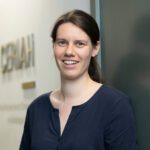Link to Pubmed [PMID] – 32091289
Link to DOI – 10.1080/14992027.2020.1728401
Int J Audiol 2020 Jul; 59(7): 534-547
Objective: Statistical knowledge about many patients could be exploited using machine learning to provide supporting information to otolaryngologists and other hearing health care professionals, but needs to be made accessible. The Common Audiological Functional Parameters (CAFPAs) were recently introduced for the purpose of integrating data from different databases by providing an abstract representation of audiological measurements. This paper aims at collecting expert labels for a sample database and to determine statistical models from the labelled data set.Design: By an expert survey, CAFPAs as well as labels for audiological findings and treatment recommendations were collected for patients from the database of Hörzentrum Oldenburg.Study sample: A total of 287 single patient cases were assessed by twelve highly experienced audiological experts.Results: The labelled data set was used to derive probability density functions for categories given by the expert labels. The collected data set is suitable for estimating training distributions due to realistic variability contained in data for different, distinct categories. Suitable distribution functions were determined. The derived training distributions were compared regarding different audiological questions.Conclusions: The method-expert survey, sorting data into categories, and determining training distributions – could be extended to other data sets, which could then be integrated via the CAFPAs and used in a classification task.
